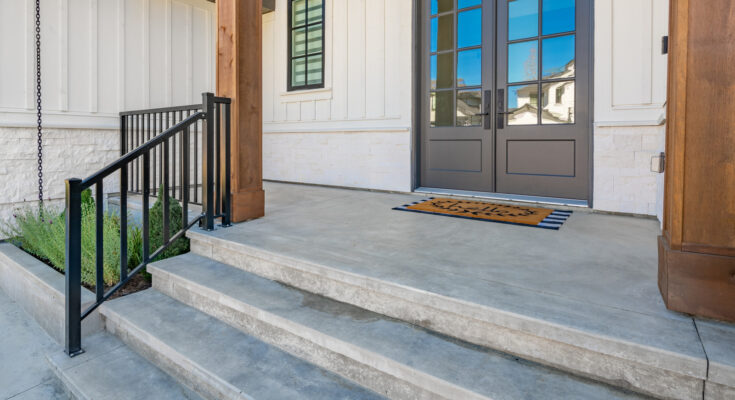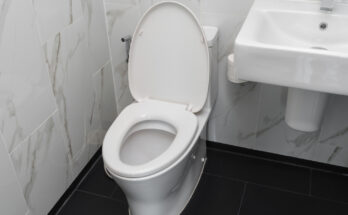What To Know Before Using Brick Veneer To Upgrade Outdated Concrete
Most homeowners love tackling DIY projects around the house to keep things looking shipshape. Take those outdated concrete areas, for example. Sometimes a little surface patching will do the trick, but if the best concrete repair products on the market aren’t cutting it, then it’s probably time for a full upgrade. Brick veneer offers a stylish and durable solution. That said, there’s one important caveat to keep in mind: Applying brick veneer over concrete steps changes their height — and that’s not just a cosmetic issue.
Thin brick veneer typically ranges from ⅜ to 1 inch thick, and this added layer affects the riser height of each step. That, in turn, could leave the end result out of alignment with building codes. If that feels like more than you’re willing to tackle, you could always look at upgrading your boring concrete patio to custom brick using this budget-friendly DIY. Still, it’s worth noting that brick veneer is durable, low-maintenance, and long-lasting. With proper installation and care, it can provide a reliable exterior finish that lasts for many decades, making it more than worth the effort.
Practical and code alignment considerations for using brick veneer
There’s no doubt that brick veneer can dramatically improve the look of outdated concrete. However, there are practical concerns and building code requirements to take into account before you get started. The first step is to measure your existing steps. Building codes state that stair risers must not exceed 7 ¾ inches, and the variation between risers within the same flight cannot exceed ⅜ inch. Even small inconsistencies can make stairs unsafe or non-compliant, so it’s worth knowing up front if the added thickness of the veneer will cause an issue.
From a more practical standpoint, good surface prep is also critical. The concrete must be structurally sound, clean, and free from debris or coatings that could interfere with adhesion. For outdoor installations, water management becomes especially important. You’ll need to ensure your handiwork is properly sealed to prevent water from pooling or seeping into the concrete beneath the veneer.
Finally, check with your local building authority before starting the project. While most follow IRC standards, regional differences can affect your installation. Being proactive here can save you time and money down the line. Still feeling daunted by the potential magnitude of this project? Take a look at this: It’s the technique you should learn if you want to upgrade your concrete floor without brick veneer.



